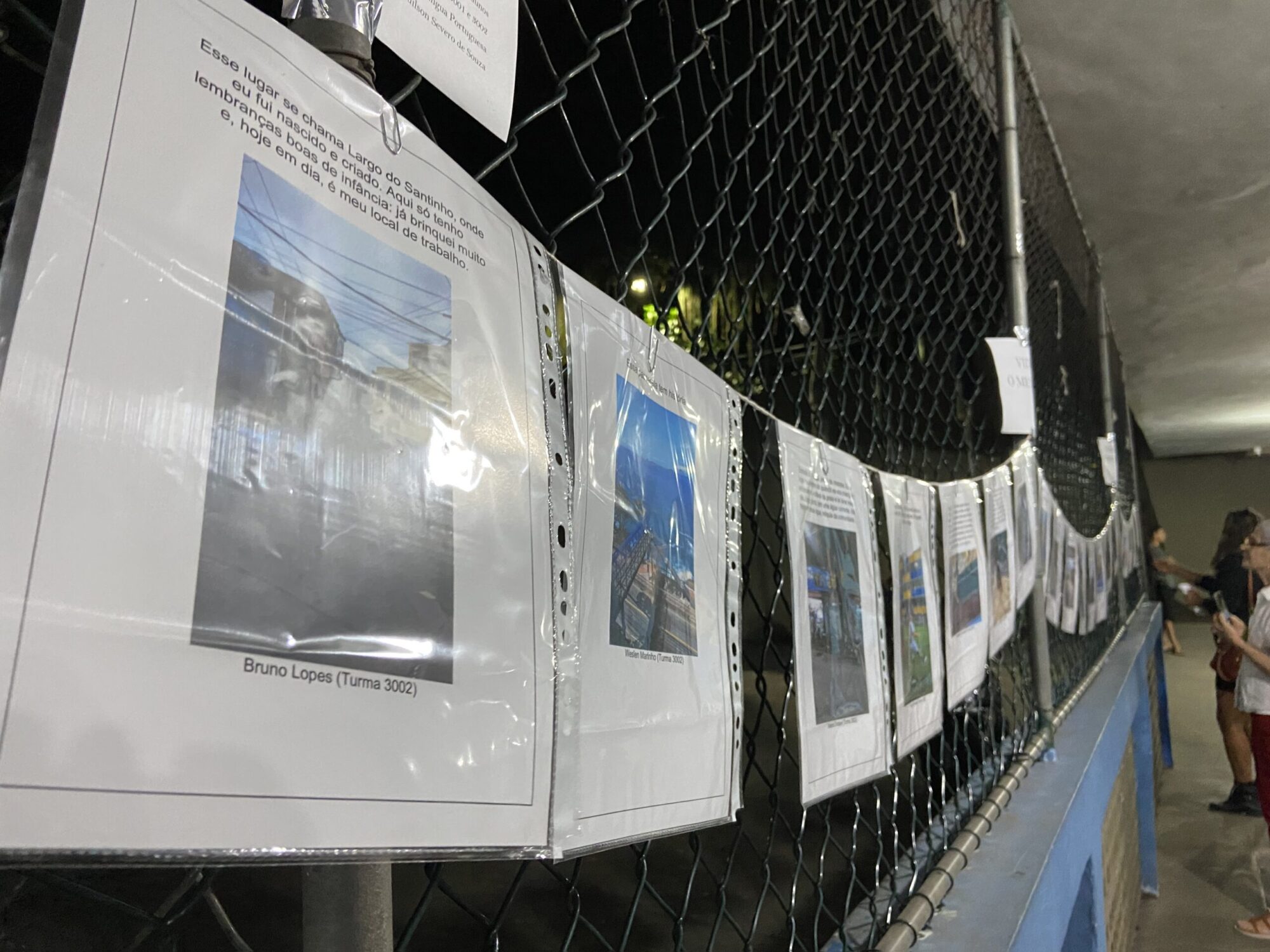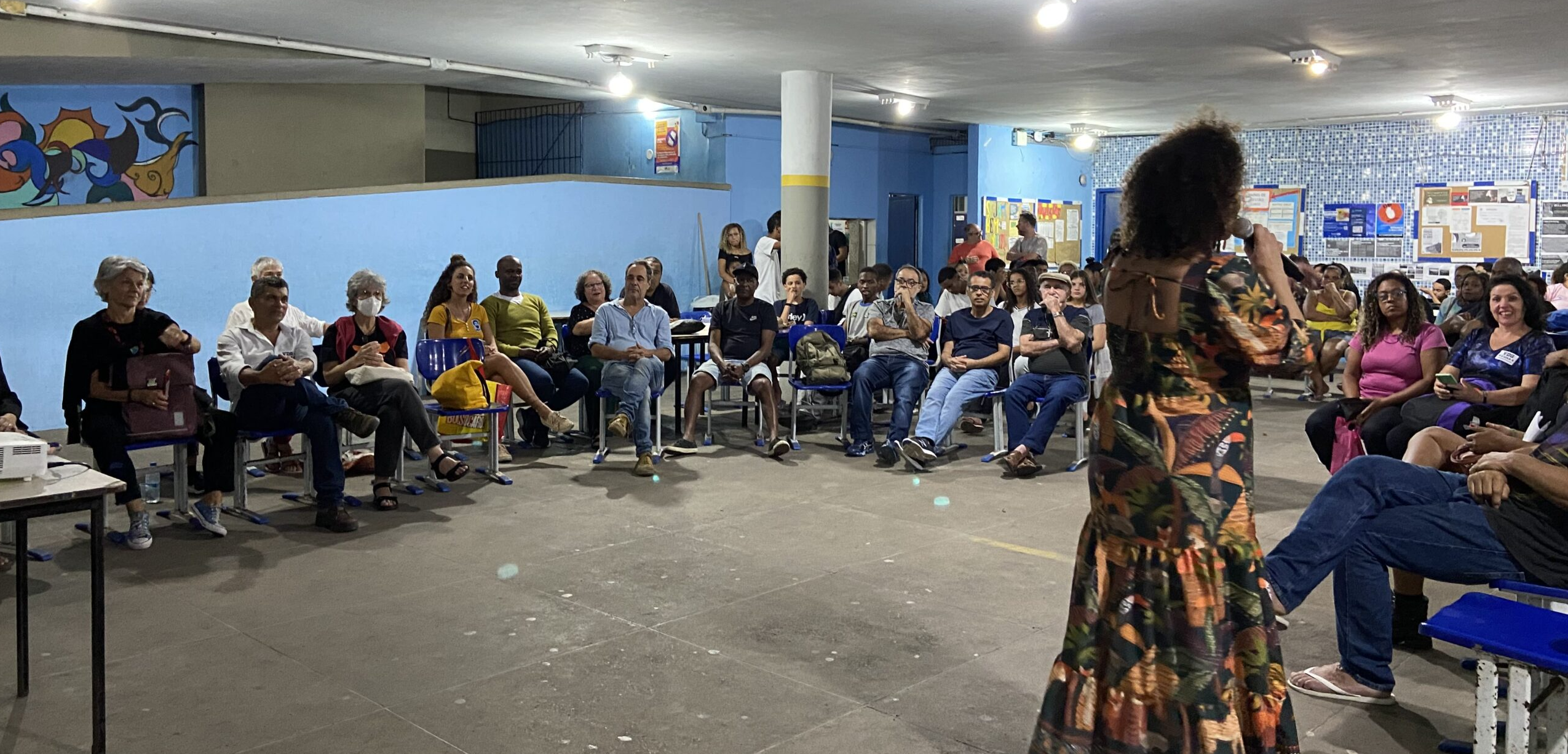
Clique aqui para Português
On October 14, 2022, youth from the Almirante Tamandaré State School got together to hear from older residents who fought against evictions in the favela of Vidigal during the military dictatorship in Brazil (1964-1985).
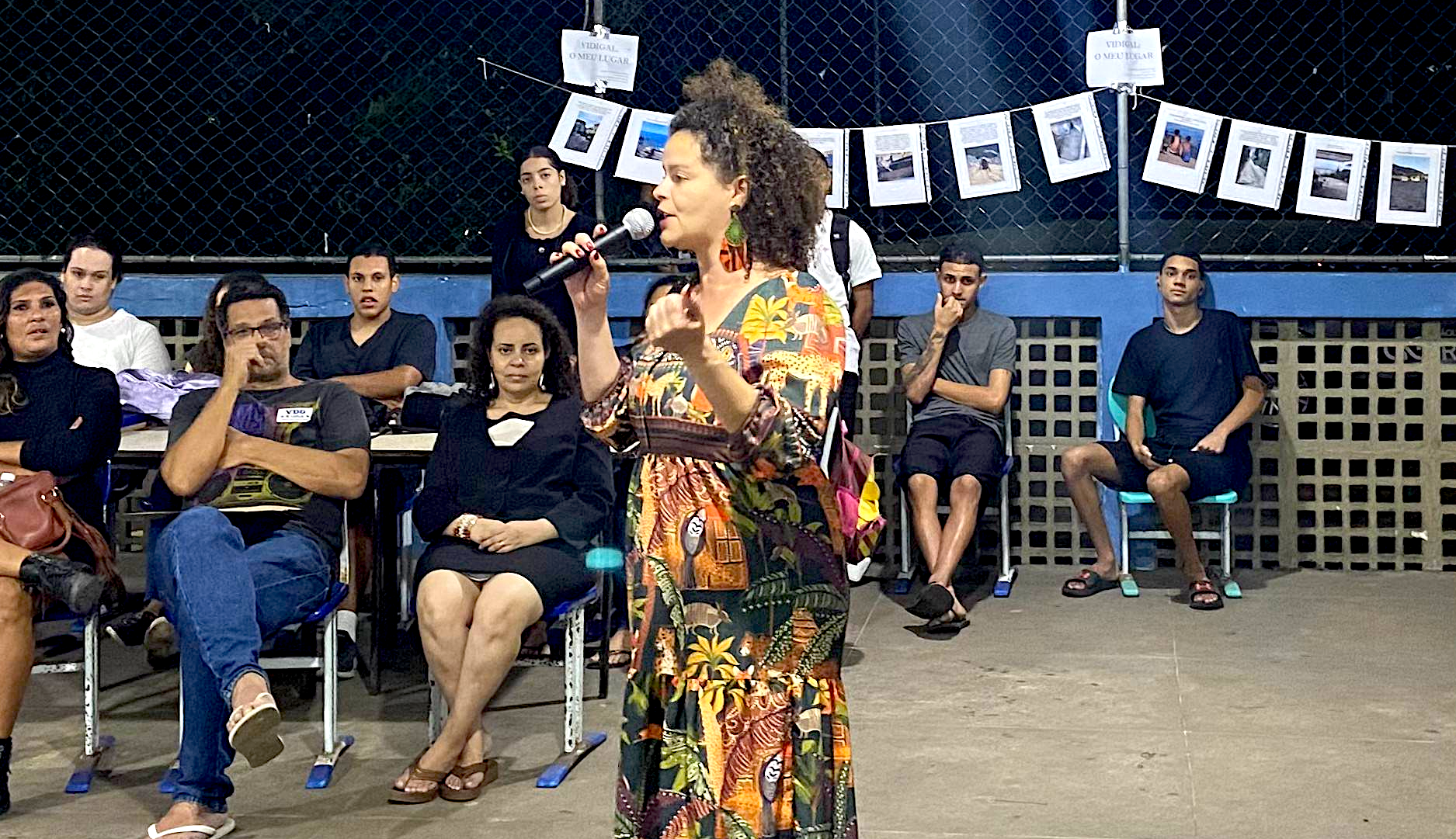
Forty-five years ago, at the height of the dictatorship, residents of Vidigal were taken by surprise by a marking on their front doors indicating that their houses were to be removed, supposedly due to imminent landslide risk. The Vila do Vidigal Residents’ Association, however, managed to resist and formally stop the evictions with legal support from the Favelas Pastoral Committee of Brazil’s Catholic Church, founded at that time to offer organizing support to favela residents.
“Our heroes of resistance… it’s thanks to the people [being celebrated] here today, who fought for us, that Vidigal remains,” stated Bárbara Nascimento, a researcher born and raised in the community who organized the event alongside Adilson Severo de Souza.
In Vidigal, the Streets are Named After Living People
Lovingly nicknamed the “old guard” by the younger people in the audience, older residents relayed what they experienced at the time.
“They told us that boulders were going to roll down and kill everyone, but later on we found out that they were going to build luxury homes. Part of the money had already been paid and the rest would be paid after the favela had been removed,” recalled Seu Armando, leader of the association during the fight against evictions. Located on the seafront between Rio’s elite Leblon and São Conrado neighborhoods, Vidigal was coveted by upper class real estate investors.
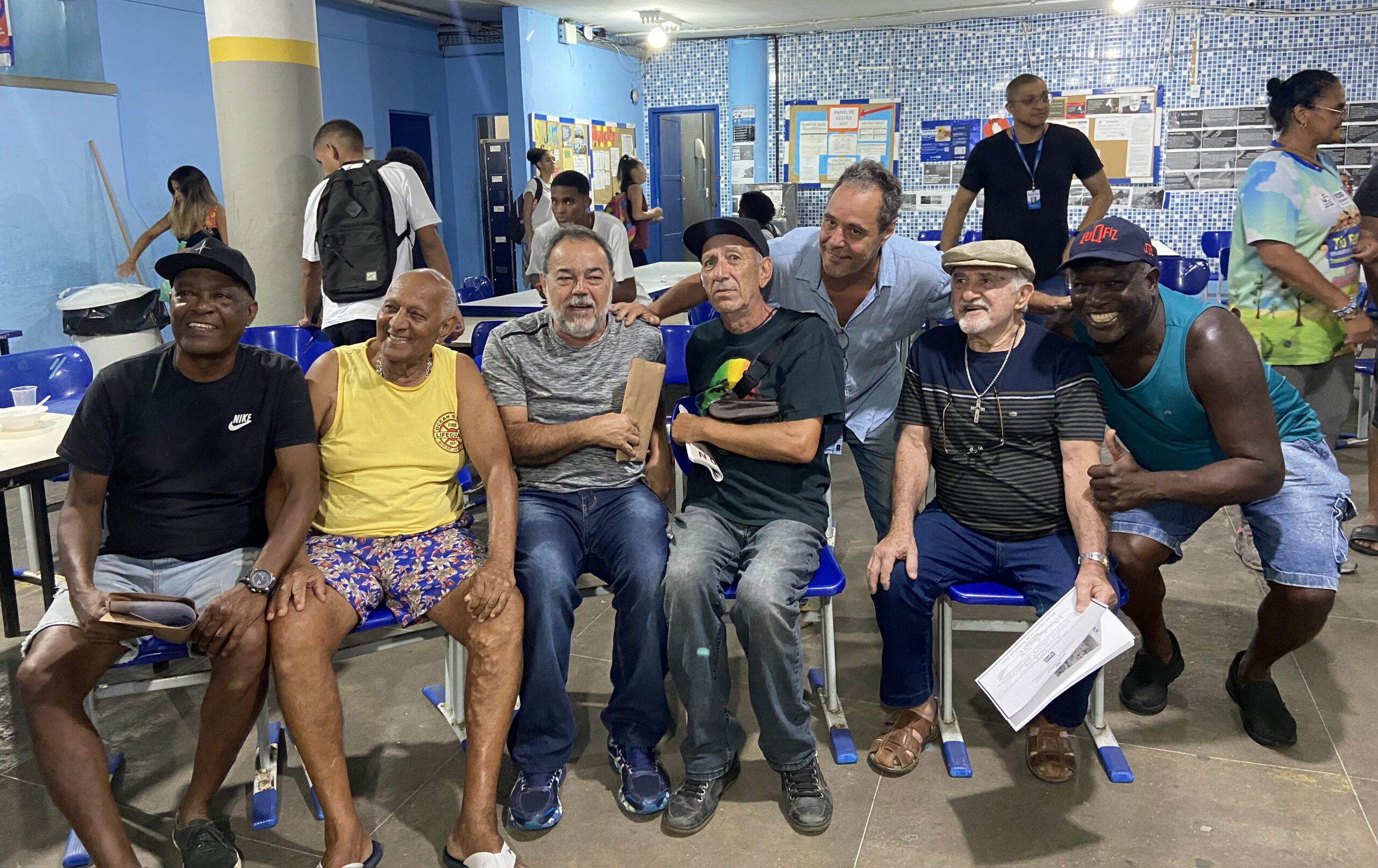
Creativity was needed to stall for time while waiting for injunctions and legal decisions to stop the evictions. One of the youngest in the task force, Paulinho recalled: “I used to wear a shirt and tie to work. When I stopped by the evictions area I was confused for a lawyer and that helped push back the removal.”
Furthermore, Paulinho recalled how residents managed to convince COMLURB, Rio’s waste management utility at the time responsible for tearing down the houses, “to be really slow at removing things.” The belongings were to be taken to Antares, in the extreme West Zone of Rio, where residents were to live in tiny homes with no access to schools or hospitals.
“By only taking objects like brooms or chairs to Antares, the COMLURB workers helped us wait for the legal order suspending the eviction of the community, which came before the majority of belongings had been taken away from the homes. It was a beautiful fight.” — Seu Armando
As a result of the struggle, streets in Vidigal are named after living people, in honor of those who won the fight against eviction.
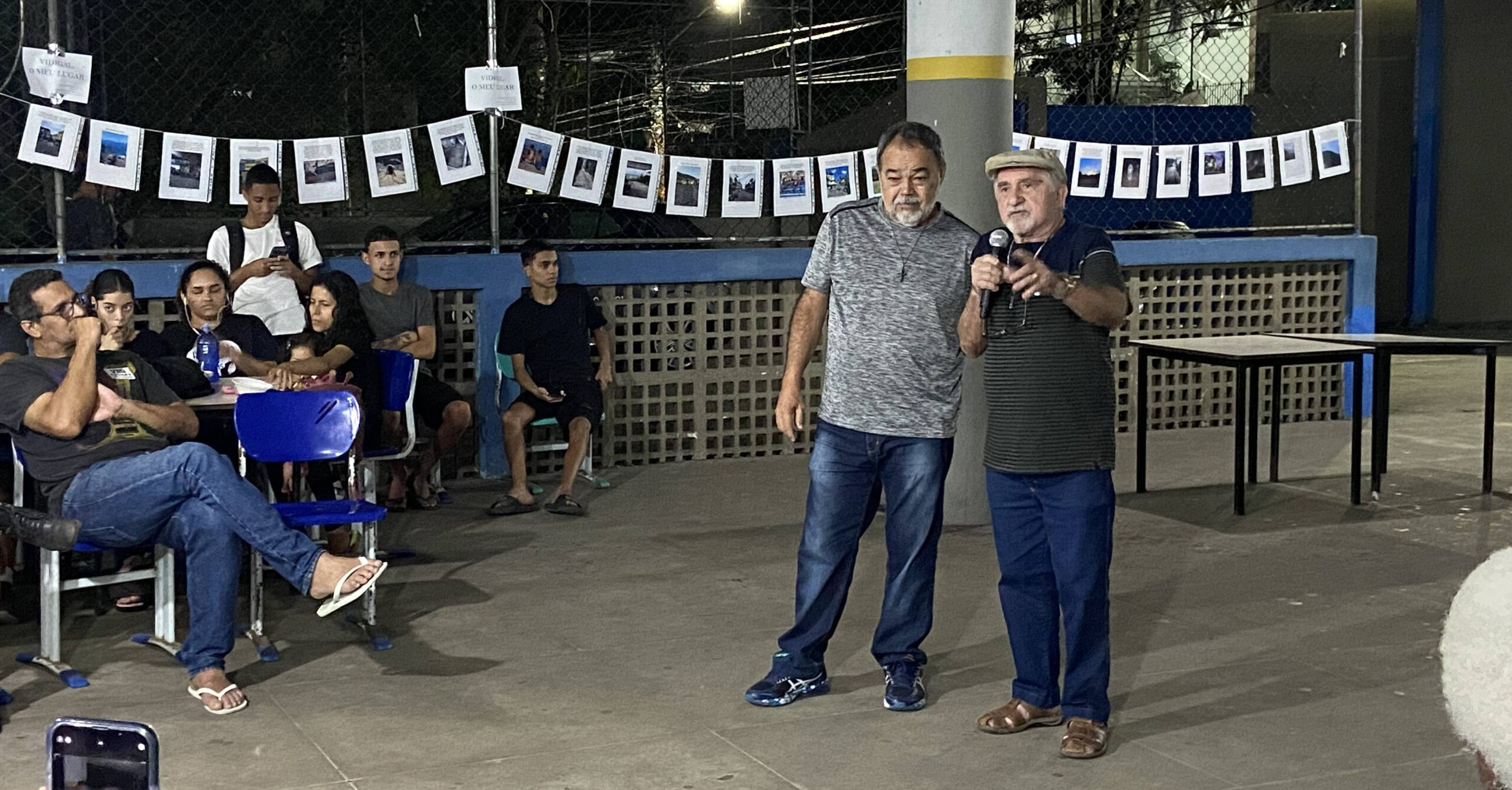
Passing the Torch on to the Younger Generation
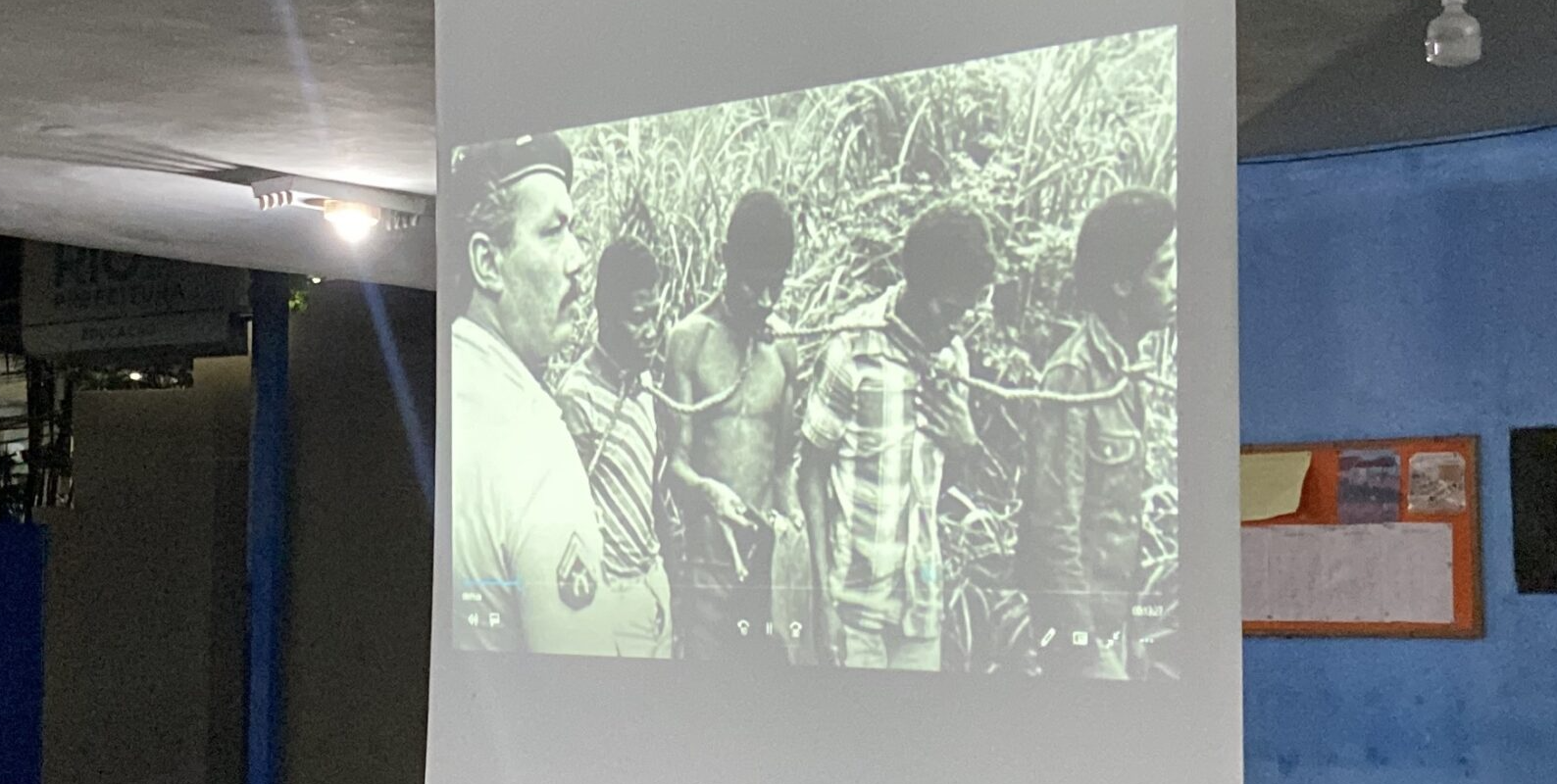
“The struggle continues,” explained Rita Machado who was part of the Vidigal youth group at the time. The favela continues to be hostage to private interests with intentions to build houses for higher earning people attracted by the views from the hillside. This phenomenon of gentrification means that houses are highly valued and [the cost of living in the surrounding area] increases. Consequently, the actual residents of Vidigal no longer have the purchasing power to be able to live in the favela.
For Rita, the younger generation needs to be alert. Unlike 45 years ago, Brazil is a democracy and young people have more power than they did before:
“What does this have to do with you? It was a dictatorship back then. We had to swallow what they said and even so, we fought… You can continue this, you can write different histories, by voting!”
That is why the work done to preserve the community’s memory is so important to participants. And so the event included a showing of two documentaries: A Favela do Papa (The Pope’s Favela) about Pope John Paul II’s visit in 1980, and Raízes do Vidigal (Roots of Vidigal) about the Acadêmicos do Vidigal samba school. The event also had presentations by students of the school, with their projects remembering resistance in their community.
